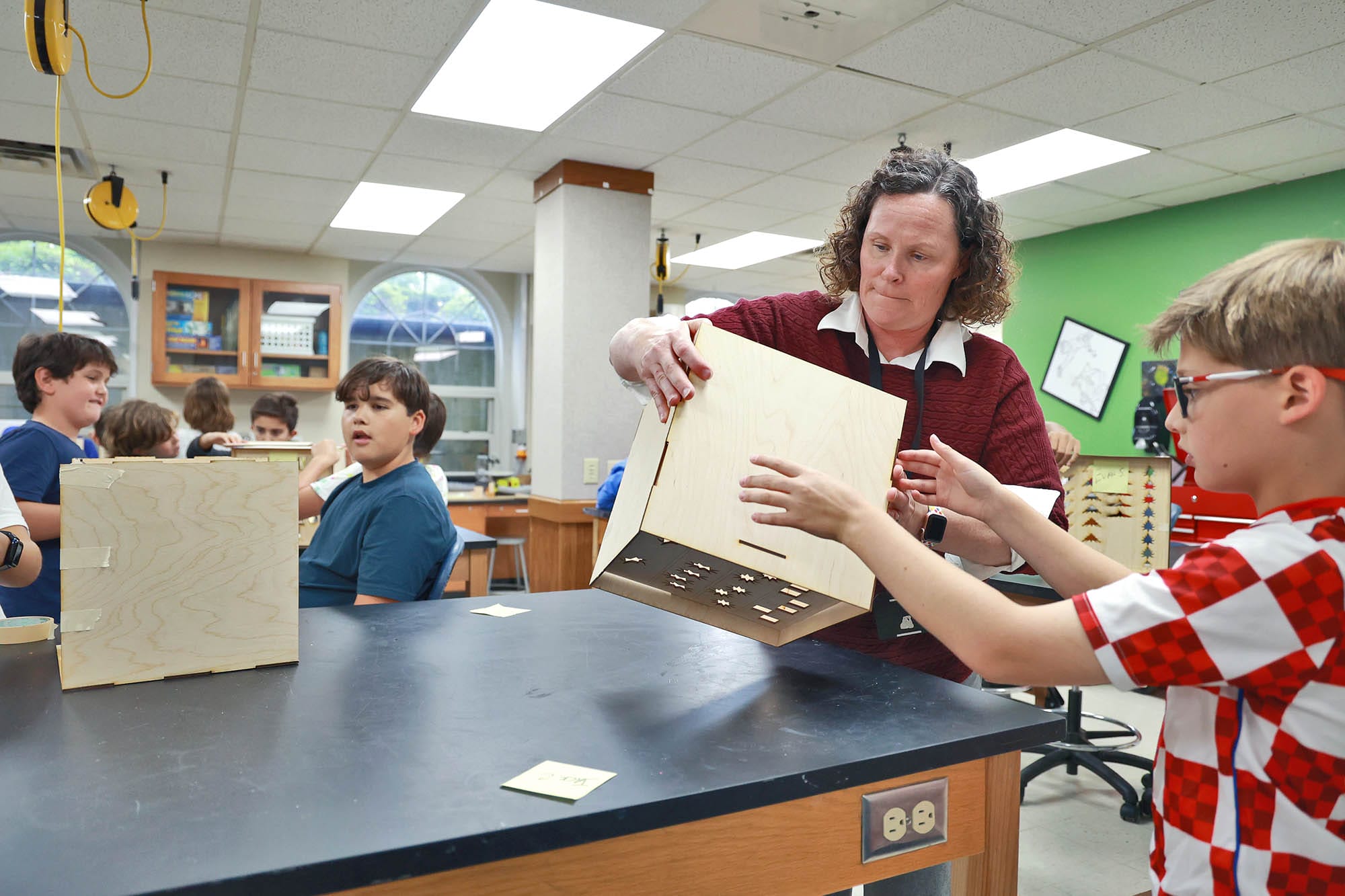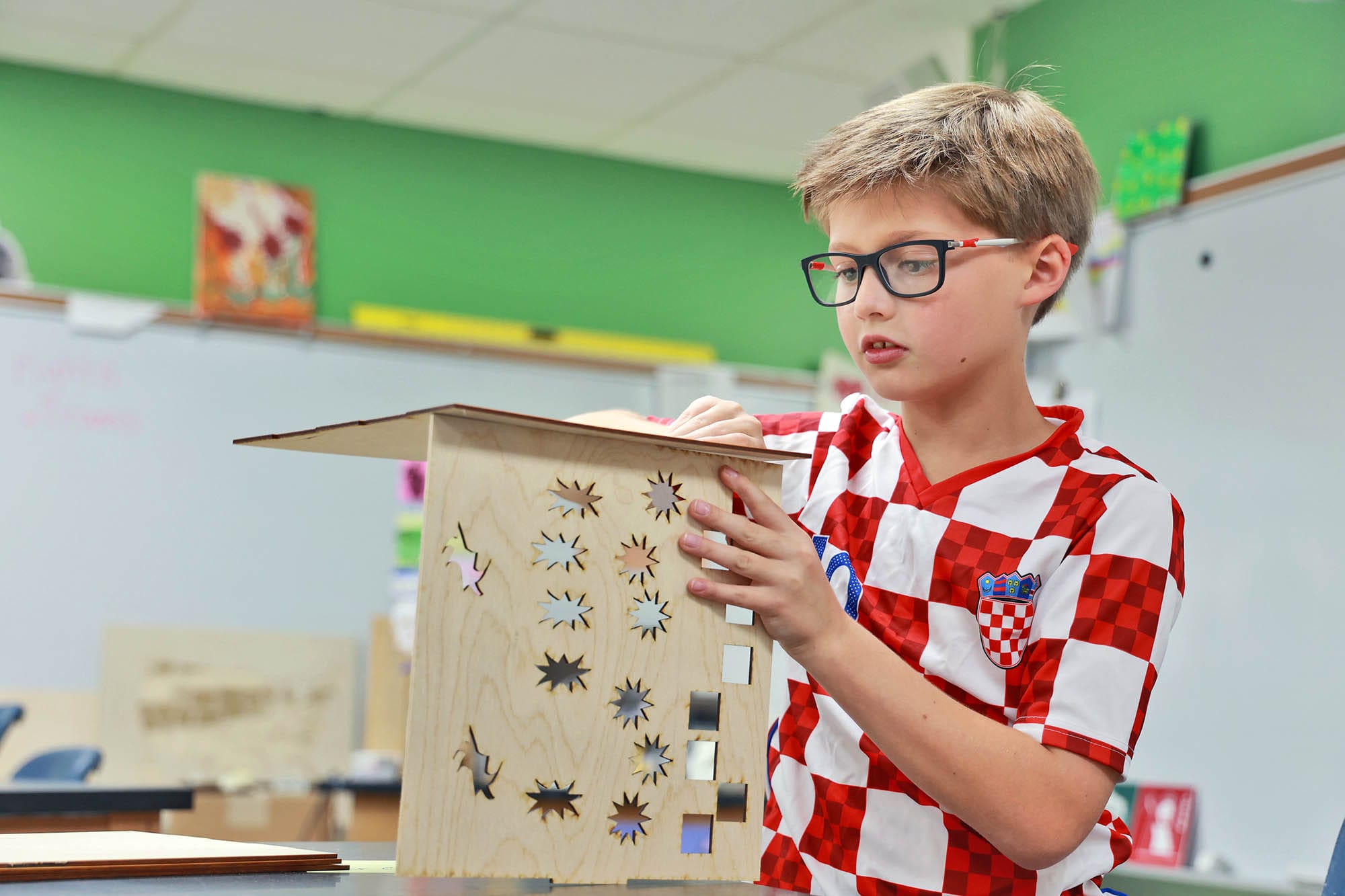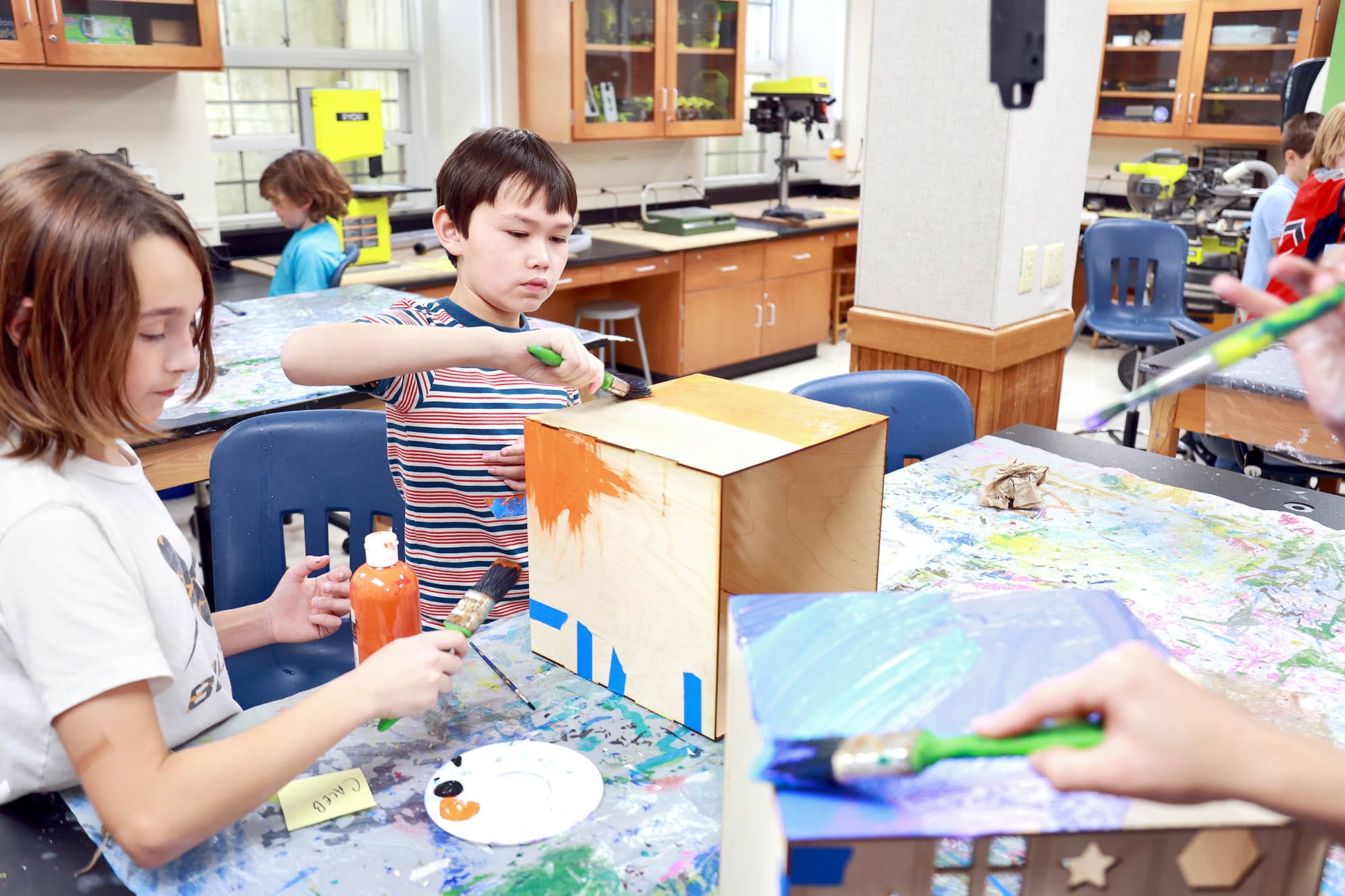Dreaming about moving in to your very first apartment is a little easier when you’ve already designed the space and built a model of the building. Since the beginning of the school year, fifth-grade students working with Kristina Jones, Middle School Math Teacher, have been figuring out how to construct and personalize scaled-down loft apartment units. The loft project began early in the school year and will continue through the Spring semester as students learn new math concepts. Those math lessons will continue to be integrated into the loft construction process, giving students a tangible application for the information. “I think it’s really important for kids to know that math is more than just doing problems on a page,” says Jones. Giving students an application for the mathematical concepts is integral for their learning and understanding. Jones emphasizes that math shouldn’t just be memorizing an algorithm. “They need to touch it, and they need to move it, and they need to draw it,” she says. “When students are able to apply newly acquired concepts to real-life situations, their understanding and retention far exceeds rote memorization.”

Oftentimes, students might be good at solving equations or better at problem-solving, and the loft project helps bridge those skills. “One of my big goals is that the kids really need to have a number sense going forward,” says Jones. Strong math students can do computation easily, but “when it comes to breaking it down, visualizing it, doing it as a picture, or solving a word problem, they struggle more because it’s not as concrete as saying ‘follow these steps,'” she says.
The loft process gives students ample opportunities to utilize the math they learn. Students get hands-on experience finding surface area, multiplying decimals, and working with the order of operations to build their lofts accurately. “We did place value really early, and that’s the first step.” Understanding how numbers fit into the 1000s, 100s, 10s, and 1s place is a foundational math concept; students were given a four-digit number for their address and then cut out the windows to represent the address. “The idea is to teach a concept and build off that,” Jones explains. “Making the windows really solidified the concept for them.”
Jones’ students are learning new ways to think about numbers and what they represent. The next step in the loft project is to pick out furniture, and students will be required to add and multiply decimals (if you had three of these, how much would it cost?). When students decorate their loft interiors, they will work with the order of operations (if you want two of those, plus three of these, plus…), and Jones will ask her students in what order they would need to solve the problem. When students “buy” carpeting and paint for their lofts, they will need to calculate the square footage and the cost of materials. The applications for the class lessons go on and on, and students really enjoy the process. “There’s a lot of buy-in because the kids are super excited about it,” says Jones. “It keeps their interest. They keep asking, ‘Do we get to paint our lofts?’ and ‘Do we get to do this again?'”




































































